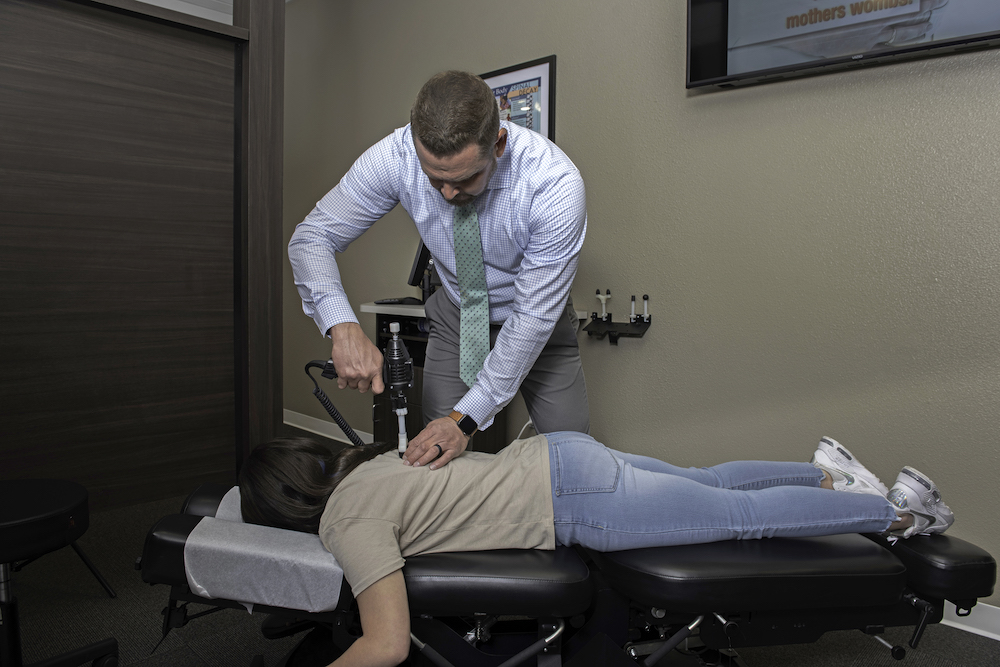What Are the Treatment Options for a Bulging or Herniated Disc in the Lower Back?
3 min read

Conservative, nonsurgical treatment is usually the first course of action for a bulging or herniated disc. The goal is to reduce the symptoms of your condition so your spine can heal. It’s also intended to help prevent future problems. While surgery may eventually be recommended for patients who have severe or debilitating pain that doesn’t improve, it’s not typically the first recommendation for most patients. Often times, conservative methods are enough to relieve symptoms and reduce back pain. And in some cases, conservative treatment can reverse the spinal condition.
One of the most common ways to treat lower back pain caused by a bulging or herniated disc is chiropractic care. Research has shown chiropractic care for the spine to be a highly effective method for treating symptoms of bulging and herniated discs, including sciatic nerve pain and lower back pain.
Chiropractic adjustments work by helping to place your body in the proper position that then allows the body to heal itself. A chiropractor may perform one or more of the many different types of adjustments and other manual therapies used in chiropractic care. Therapies that may be used to treat a bulging or herniated disc can include:
-
Spinal decompression. A type of motorized spinal traction that is used to reduce the pressure on the spinal discs. This is done by gently stretching the spine for a period of 15 to 30 minutes per treatment, over a period of several weeks, depending on the patient’s condition. This method is a nonsurgical way to reduce pressure on the discs so that water and nutrients can surround the discs so they can heal. For many patients, the Back on Trac lumbar traction technology will be included for lower back pain relief.
-
Cold laser therapy. A method in which a low-intensity laser is used to stimulate cells. When the laser is applied to the treatment area, affected tissues absorb the light. This causes blood to rush to the problem area, which in turn promotes healing of all damaged cell types, including muscle, ligament, cartilage, and nerves. Village Chiropractic offers a Robotic Class IV cold laser called Multiwave Locked System (MLS).
-
Electrical Muscle Stimulation (EMS). A technique that delivers light electrical pulses to the muscles surround the site of back pain, may be used in conjunction with manual manipulation to help relieve pain.
-
Therapeutic exercise. Exercise is also an effective method for treating disc problems. Your clinician may recommend a spinal stabilization program, which uses a series of targeted exercises to strengthen the body’s core. Strengthening back muscles can help restore balance and range of motion, provide relief from back pain, and prevent future injury.
Other Treatments for Bulging and Herniated Discs
In addition to chiropractic care, your clinician may recommend other treatments for your bulging or herniated disc. The amount of pain you’re experiencing and severity of the bulge or rupture will determine what steps to take next.
Some of the other treatments may include:
-
Medications. Some patients may need to take medications to help relieve back pain caused by bulging or herniated discs. Depending on the severity of your case, your doctor may recommend over-the-counter pain medications. If that doesn’t improve your pain, it may be necessary for your doctor to prescribe narcotics or muscle relaxers.
-
Steroid injections. In some cases, inflammation-suppressing corticosteroids may be injected directly into the area surrounding the bulging or herniated disc to reduce swelling and inflammation, which can reduce pain.
-
Surgery. A very small number of people with bulging or herniated discs need surgery. If all conservative treatments fail to improve your symptoms, it may be necessary to meet with a spine surgeon. There are several types of surgery for bulging or herniated discs, which include discectomy, laminotomy, foraminotomy, and spinal fusion or stabilization.
If you have back pain that doesn't seem to go away or comes back frequently, contact us to request an appointment.





